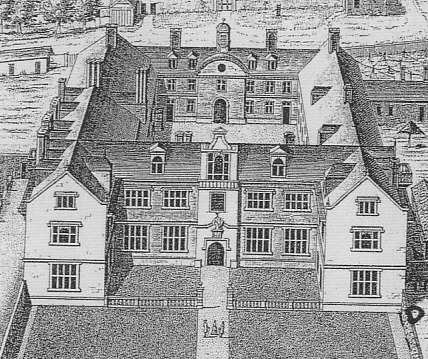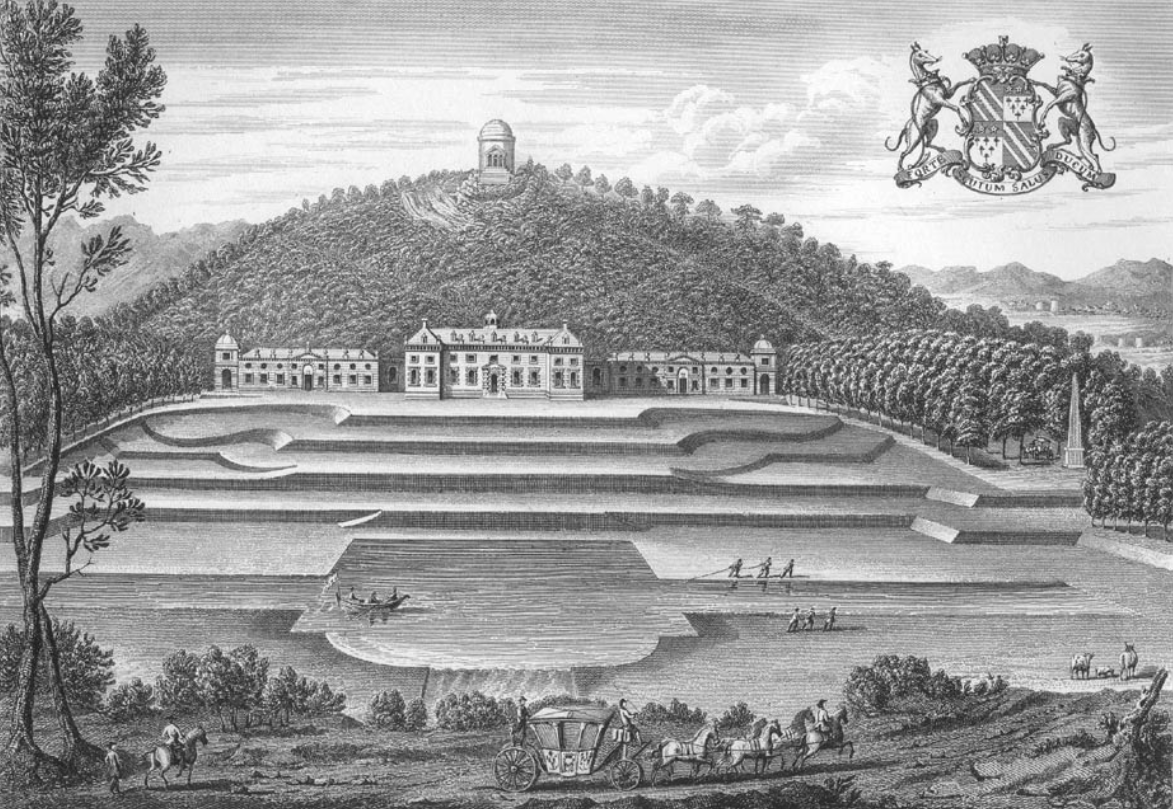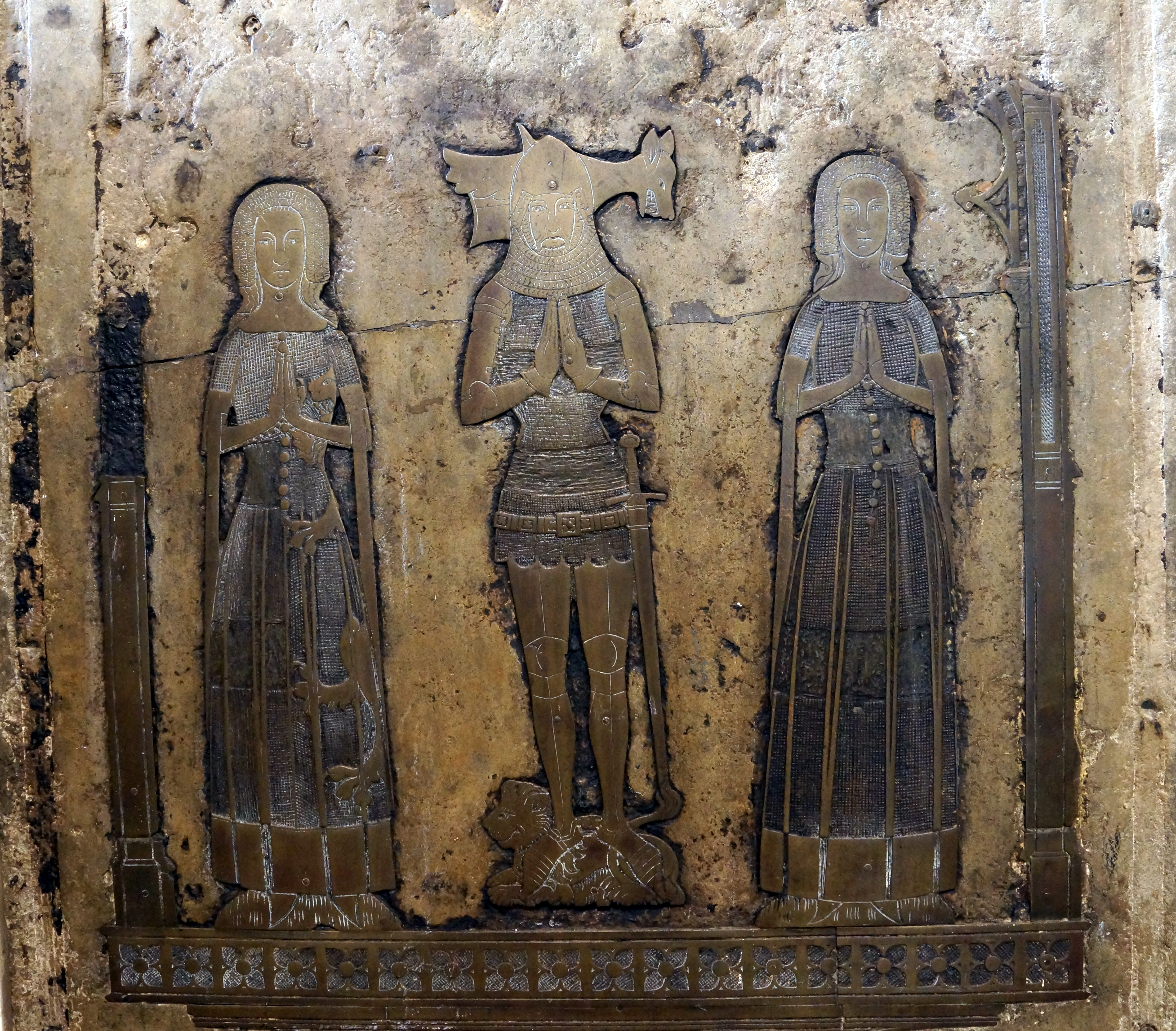|
Richard Fortescue (politician)
Richard Fortescue (c. 1517–1570) of Filleigh, North Devon was an English Member of Parliament and prominent land-owner and member of the Devonshire gentry, ancestor to the Earls Fortescue. Origins The Fortescues are an ancient family, whose roots can be traced back to Norman times. He was the eldest son of Bartholomew Fortescue, Esq. (d. 1557), lord of the manor of Filleigh and of several other manors, by his wife Ellen More (or Moore), daughter of Maurice More of Moor Hayes in Cullompton, Devon. He was a great-grandson of Sir John Fortescue (c. 1394 - c. 1480), chief justice. Career Richard Fortescue was elected MP for Tavistock in 1545. He was a Justice of the Peace for Devon by 1558/9, and Sheriff of Devon in 1562-3. Marriage and Progeny He married about 1544 Joan Morton, daughter of Robert Morton, by Dorothy, daughter of Sir John Fitz James, of Redlynch (in Bruton), Somerset, Chief Baron of the Exchequer, Chief Justice of the King’s Bench, 1526–39 [see Benol ... [...More Info...] [...Related Items...] OR: [Wikipedia] [Google] [Baidu] |
Heanton Satchville, Petrockstowe
Heanton Satchville was a historic manor in the parish of Petrockstowe, North Devon, England. With origins in the Domesday manor of Hantone, it was first recorded as belonging to the Yeo family in the mid-14th century and was then owned successively by the Rolle, Walpole and Trefusis families. The mansion house was destroyed by fire in 1795. In 1812 Lord Clinton purchased the manor and mansion of nearby Huish, renamed it Heanton Satchville, and made it his seat. The nearly-forgotten house was featured in the 2005 edition of Rosemary Lauder's "Vanished Houses of North Devon". A farmhouse now occupies the former stable block with a large tractor shed where the house once stood. The political power-base of the Rolle family of Heanton Satchville was the pocket borough seat of Callington in Cornwall, acquired in 1601 when Robert Rolle (died 1633) purchased the manor of Callington.Hunneyball (2010) Description of mansion The mansion was at one time "one of the most imposing ho ... [...More Info...] [...Related Items...] OR: [Wikipedia] [Google] [Baidu] |
Dexter And Sinister
''Dexter'' and ''sinister'' are terms used in heraldry to refer to specific locations in an escutcheon bearing a coat of arms, and to the other elements of an achievement. ''Dexter'' (Latin for 'right') indicates the right-hand side of the shield, as regarded by the bearer, i.e. the bearer's proper right, and to the left as seen by the viewer. ''Sinister'' (Latin for 'left') indicates the left-hand side as regarded by the bearer – the bearer's proper left, and to the right as seen by the viewer. In vexillology, the equivalent terms are ''hoist'' and '' fly''. Significance The dexter side is considered the side of greater honour, for example when impaling two arms. Thus, by tradition, a husband's arms occupy the dexter half of his shield, his wife's paternal arms the sinister half. The shield of a bishop shows the arms of his see in the dexter half, his personal arms in the sinister half. King Richard II adopted arms showing the attributed arms of Edward the Confessor in t ... [...More Info...] [...Related Items...] OR: [Wikipedia] [Google] [Baidu] |
Gauntlet (glove)
A gauntlet is a variety of glove, particularly one having been constructed of hardened leather or metal plates which protected the hand and wrist of a combatant in Europe between the early fourteenth century and the Early Modern period. Today it can also refer to an extended cuff covering the forearm as part of a woman's garment. Types Armour Beginning in the 11th century, European soldiers and knights relied on chain mail for protection of their bodies, and chain armor "shirts" with wide sleeves that hung to the elbow were common. However, it wasn't until the 12th century that chain mail shirts with longer, narrower sleeves began to be worn, and these on occasion had chain mail mittens or "muffs" resembling fingerless gloves and with a pocket for the thumb (though some of these did have complete fingers as well). These attached at the lower edge of the sleeve, and protected the wearer's hands from cuts and lacerations during combat but offered no protection against crush ... [...More Info...] [...Related Items...] OR: [Wikipedia] [Google] [Baidu] |
Prie-dieu
A prie-dieu (French: literally, "pray oGod") is a type of prayer desk primarily intended for private devotional use, but which may also be found in churches. A similar form of chair in domestic furniture is called "prie-dieu" by analogy. Sometimes, a prie-dieu will consist only of the sloped shelf for books without the kneeler. History The prie-dieu appears not to have received its present name until the early 17th century. In that period in France, a small room or oratory was sometimes known by the same name. In the Middle Ages, the faithful attended the parish services standing. From the 16th century onwards, wooden benches or chairs were made available, according to an order fixed by the customary law, and rented from the farmer who was the successful bidder for the "chair farm" or from the churchwarden, the fixed prices (increased during solemn masses) being collected by the chairmaker. Description and use It is a small, ornamental wooden desk furnished with a thi ... [...More Info...] [...Related Items...] OR: [Wikipedia] [Google] [Baidu] |
Escutcheon (heraldry)
In heraldry, an escutcheon () is a shield that forms the main or focal element in an Achievement (heraldry), achievement of arms. The word can be used in two related senses. In the first sense, an escutcheon is the shield upon which a coat of arms is displayed. In the second sense, an escutcheon can itself be a charge (heraldry), charge within a coat of arms. Escutcheon shapes are derived from actual shields that were used by knights in combat, and thus are varied and developed by region and by era. Since shields have been regarded as military equipment appropriate for men only, British ladies customarily bear their arms upon a Lozenge (heraldry), lozenge, or diamond-shape, while clergymen and ladies in continental Europe bear their arms upon a Cartouche (design), cartouche, or oval. Other shapes are also in use, such as the roundel (heraldry), roundel commonly used for arms granted to Aboriginal Canadians by the Canadian Heraldic Authority, or the Nguni shield used in Coats of ar ... [...More Info...] [...Related Items...] OR: [Wikipedia] [Google] [Baidu] |
Manor House
A manor house was historically the main residence of the lord of the manor. The house formed the administrative centre of a manor in the European feudal system; within its great hall were held the lord's manorial courts, communal meals with manorial tenants and great banquets. The term is today loosely applied to various country houses, frequently dating from the Late Middle Ages, which formerly housed the landed gentry. Manor houses were sometimes fortified, albeit not as fortified as castles, and were intended more for show than for defencibility. They existed in most European countries where feudalism was present. Function The lord of the manor may have held several properties within a county or, for example in the case of a feudal baron, spread across a kingdom, which he occupied only on occasional visits. Even so, the business of the manor was directed and controlled by regular manorial courts, which appointed manorial officials such as the bailiff, granted copyhol ... [...More Info...] [...Related Items...] OR: [Wikipedia] [Google] [Baidu] |
Castle Hill, Filleigh
Castle Hill in the parish of Filleigh in North Devon, is an early Neo-Palladian country house situated north-west of South Molton and south-east of Barnstaple. It was built in 1730 by Hugh Fortescue, 14th Baron Clinton (1696–1751), who was later created in 1751 1st Baron Fortescue and 1st Earl of Clinton, the son of Hugh Fortescue (died 1719), lord of the manor of Filleigh, Weare Giffard, etc., whose family is earliest recorded as residing in the 12th century at the manor of Whympston in the parish of Modbury in South Devon. The Fortescue family became major land owners, influential in British and West Country history. Castle Hill is a rare example in Devon of an 18th-century country mansion "on the grand scale". The house was substantially reconstructed following a disastrous fire in 1934. It was designated a Grade II* listed building in 1967. The park and gardens are Grade I listed in the National Register of Historic Parks and Gardens. Today the property is leas ... [...More Info...] [...Related Items...] OR: [Wikipedia] [Google] [Baidu] |
Monumental Brass
A monumental brass is a type of engraved sepulchral memorial, which in the 13th century began to partially take the place of three-dimensional monuments and effigies carved in stone or wood. Made of hard latten or sheet brass, let into the pavement, and thus forming no obstruction in the space required for the services of the church, they speedily came into general use, and continued to be a favourite style of sepulchral memorial for three centuries. In Europe Besides their great value as historical monuments, monumental brasses are interesting as authentic contemporary evidence of the varieties of armour and costume, or the peculiarities of palaeography and heraldic designs, and they are often the only authoritative records of the intricate details of family history. Although the intrinsic value of the metal has unfortunately contributed to the wholesale spoliation of these interesting monuments, they are still found in remarkable profusion in England, and they were at one ... [...More Info...] [...Related Items...] OR: [Wikipedia] [Google] [Baidu] |








